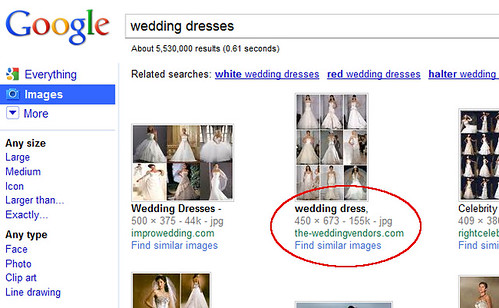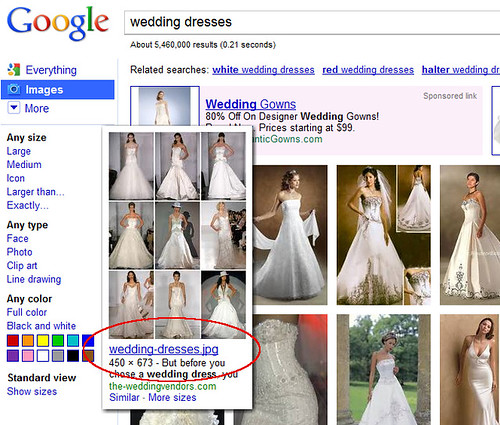As you may be aware, Google recently rolled-out a newer, AJAXified user-interface for their image search which features “infinite” scrolling and automatic pagination. The new UI was rolled-out at the end of July to a subset of users, and they state that more users will receive the new layout in upcoming days.
Beyond the items their blog post outlined, I noticed a couple of other things had changed. First, when comparing the new UI versus old, the order of the search results is a little different, indicating that the algorthm mayve been updated. Second, the text associated with the image is different — previously, some visible text from near the image on its native page was shown below the thumbnail in Image SERPs. Now, the new UI displays the image filename instead of a title or a caption.
Google has apparently decided that an image’s filename is more important to display to endusers than other text — this is a major paradigm change! Google must’ve decided that the filename is a more important usability or user-experience factor — and Google likes using such factors in their ranking algorithms.
This could mean Continue reading







